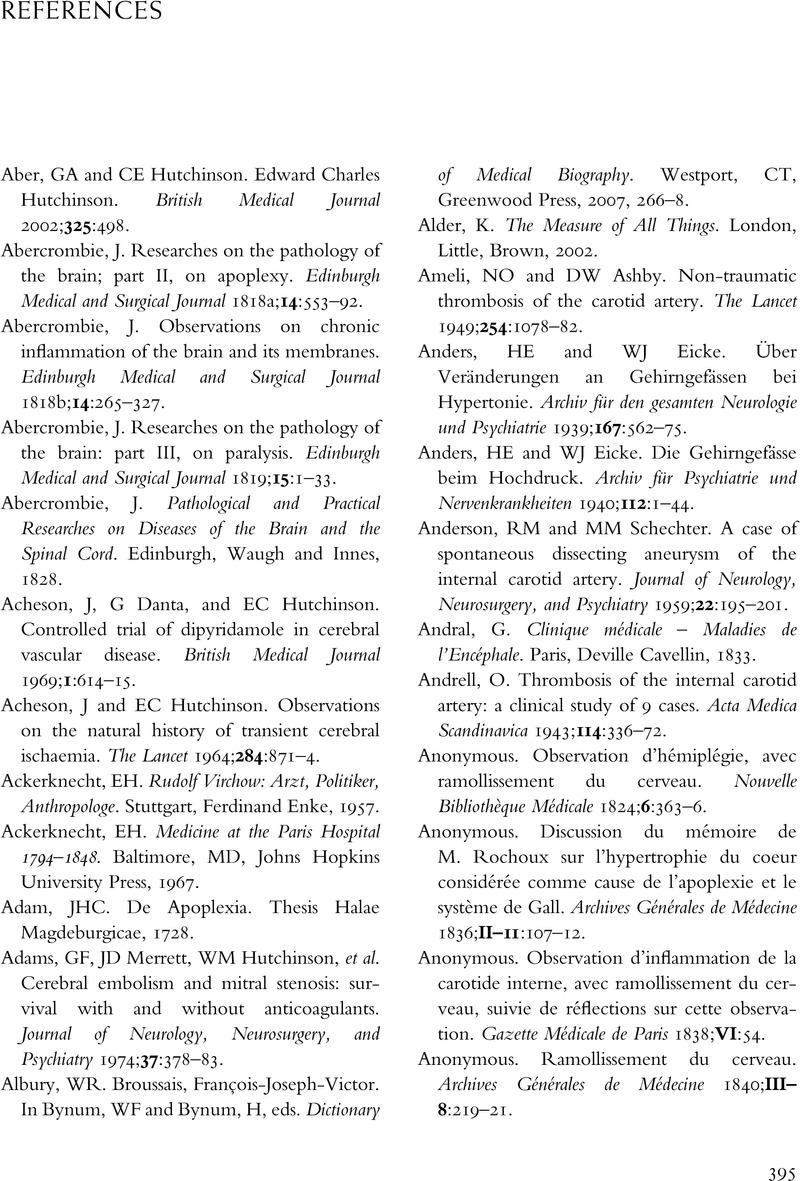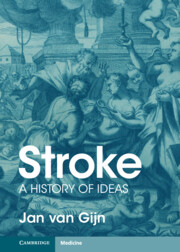Book contents
- Stroke
- Stroke
- Copyright page
- Epigraph
- Dedication
- Contents
- Preface
- One The Ventricles
- Two The Force of Blood
- Three Congestion
- Four Forgotten Forms of Apoplexy
- Five Haemorrhage
- Six Ramollissement
- Seven Thrombosis and Embolism
- Eight No Man’s Land: The Neck Arteries
- Nine Lacunes
- Ten Stroke Warnings
- Eleven Saccular Aneurysms
- Twelve Cerebral Venous Thrombosis
- Epilogue
- Acknowledgements
- References
- Index
- References
References
Published online by Cambridge University Press: 06 July 2023
- Stroke
- Stroke
- Copyright page
- Epigraph
- Dedication
- Contents
- Preface
- One The Ventricles
- Two The Force of Blood
- Three Congestion
- Four Forgotten Forms of Apoplexy
- Five Haemorrhage
- Six Ramollissement
- Seven Thrombosis and Embolism
- Eight No Man’s Land: The Neck Arteries
- Nine Lacunes
- Ten Stroke Warnings
- Eleven Saccular Aneurysms
- Twelve Cerebral Venous Thrombosis
- Epilogue
- Acknowledgements
- References
- Index
- References
Summary

- Type
- Chapter
- Information
- StrokeA History of Ideas, pp. 395 - 428Publisher: Cambridge University PressPrint publication year: 2023



